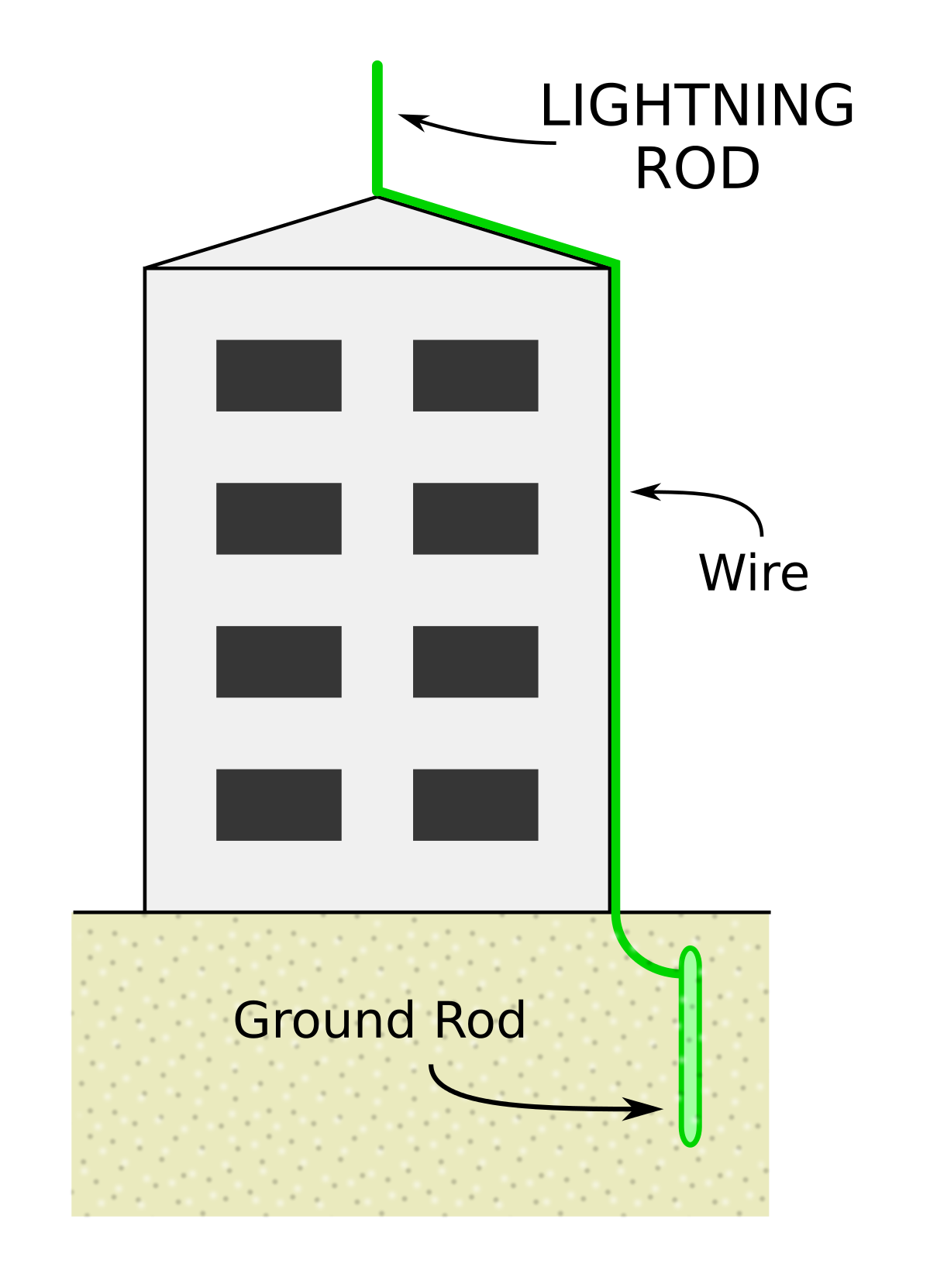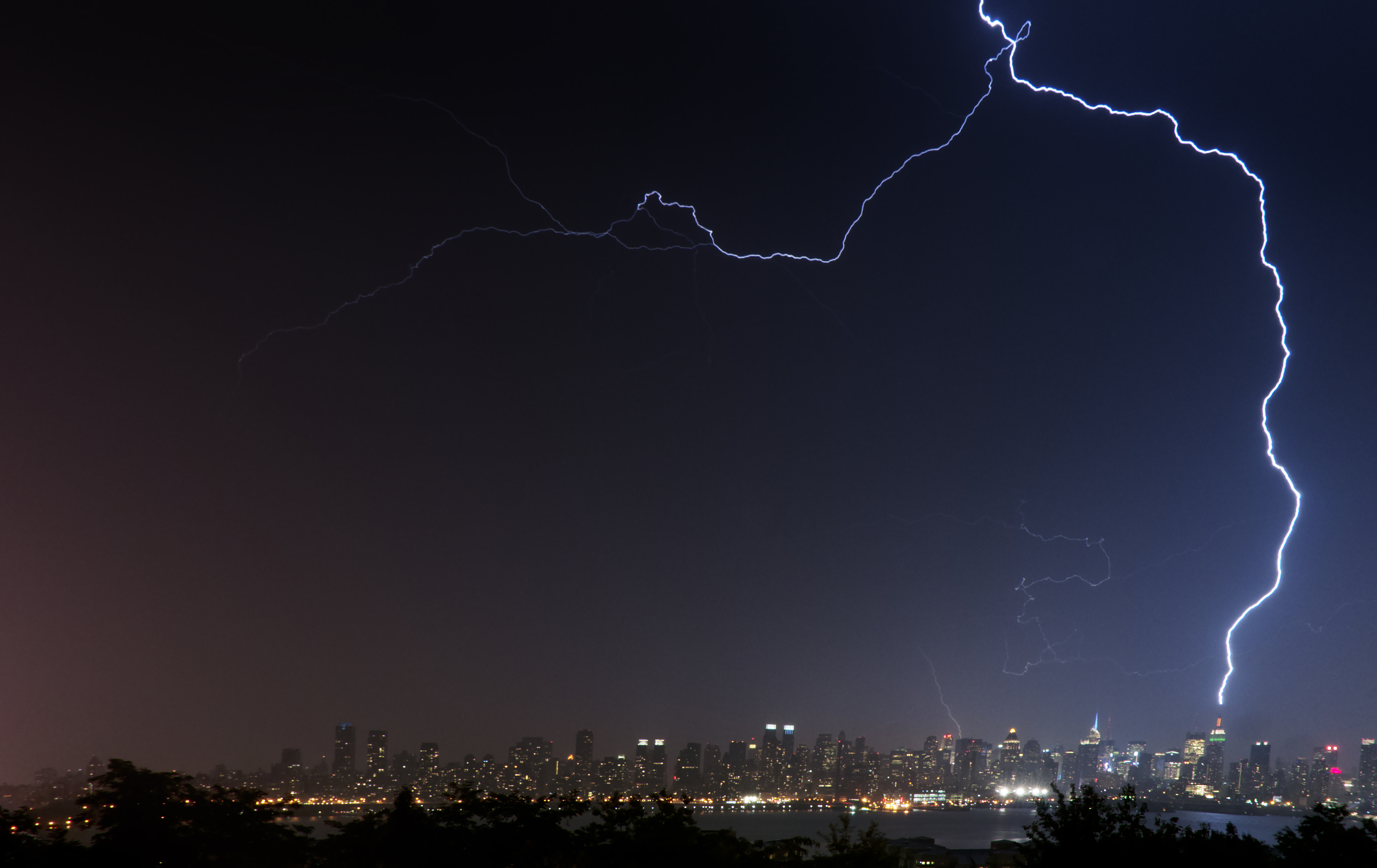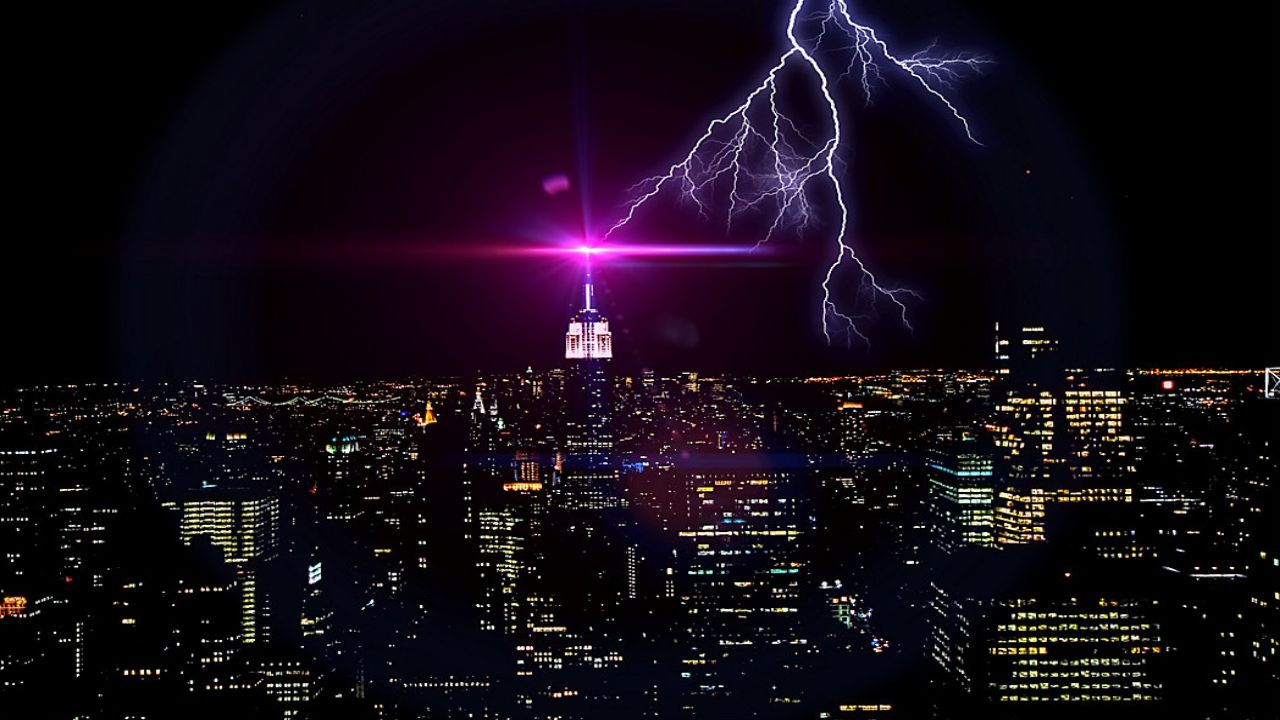When lightning strikes some of our city’s tallest structures, it makes for some pretty amazing photos. According to the Empire State Building’s website, the iconic building in Midtown is hit about 25 times per year.
In the middle of July, NYC saw several days with thunderstorms and many of those thunderstorms contained frequent lightning. Thankfully, most buildings are protected and any direct strikes cause little or no damage at all.
A single bolt of lightning carries enough electricity to create heat five times hotter than the surface of the sun. So how is it that the Empire State Building, and other buildings, can avoid significant damage if they’re being hit a few dozen times per year?
These buildings are protected by a lightning rod. Lightning rods are designed to protect a building from the damage that a direct lightning strike can cause. Unprotected buildings can experience electrical fires as the current travels across any conductive materials that exist. These can include electric wiring or even just plumbing.
To protect these buildings, the lightning rod is placed at the top of the building. The rod itself is made of highly conductive material such as copper and is connected to a wire that runs all the way down to the ground. We’re not talking just a single wire; the system is actually a grid which is designed to safely disperse the current.

It’s a common assumption that lightning rods attract lightning. But the truth is the rods just act as a safer and more effective path for lightning and its associated current.
Lightning does tend to strike the tallest object around. Therefore, if a certain building is the tallest object around, it’s more likely to receive a strike. That’s why it’s so important for these structures to be equipped with a rod and proper grounding wiring to prevent damage.

Next time you see a picture of lightning hitting a building in NYC, just remember, they’re built to handle stuff like that. How cool is that?



